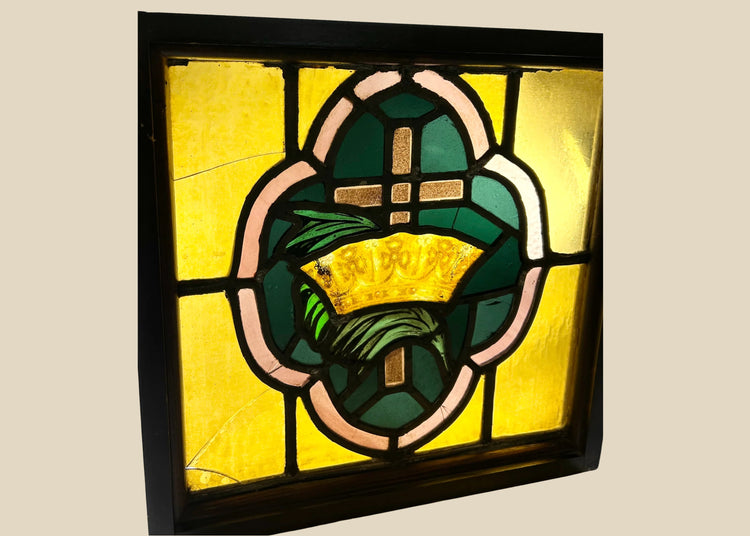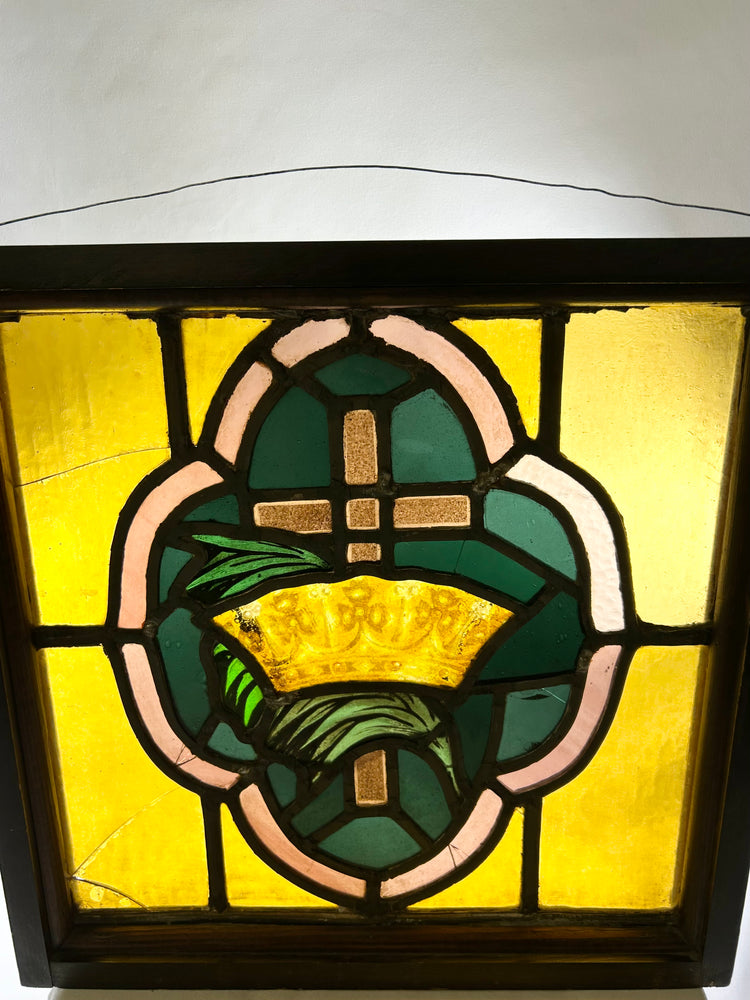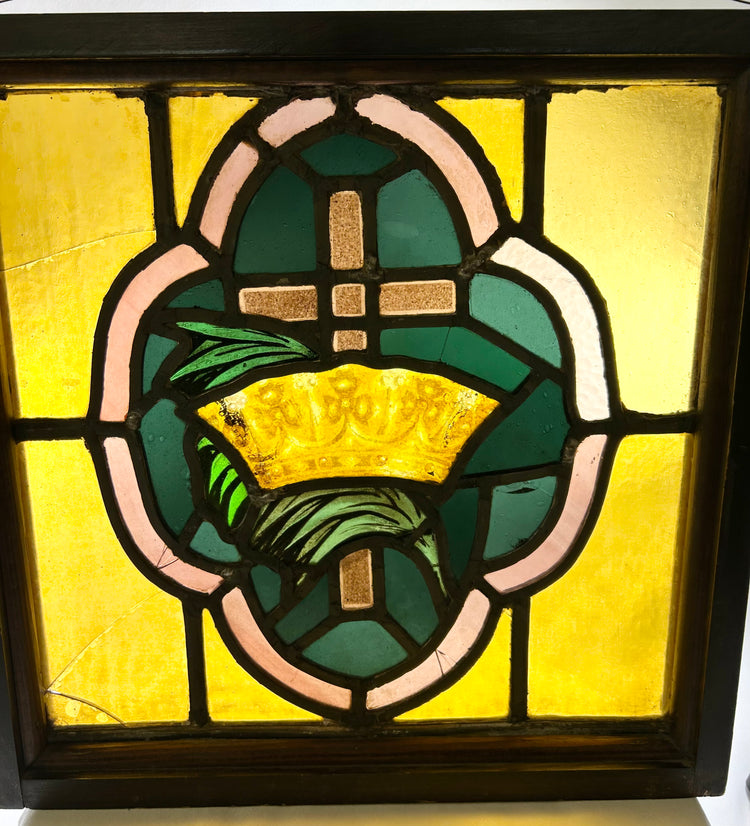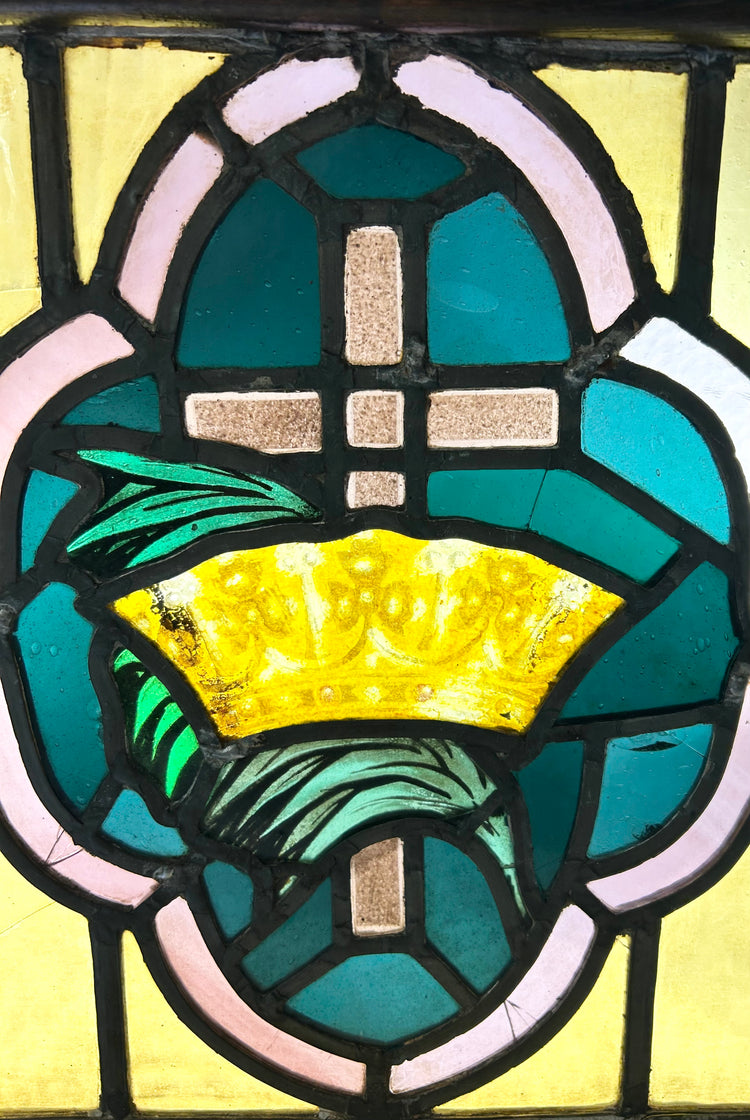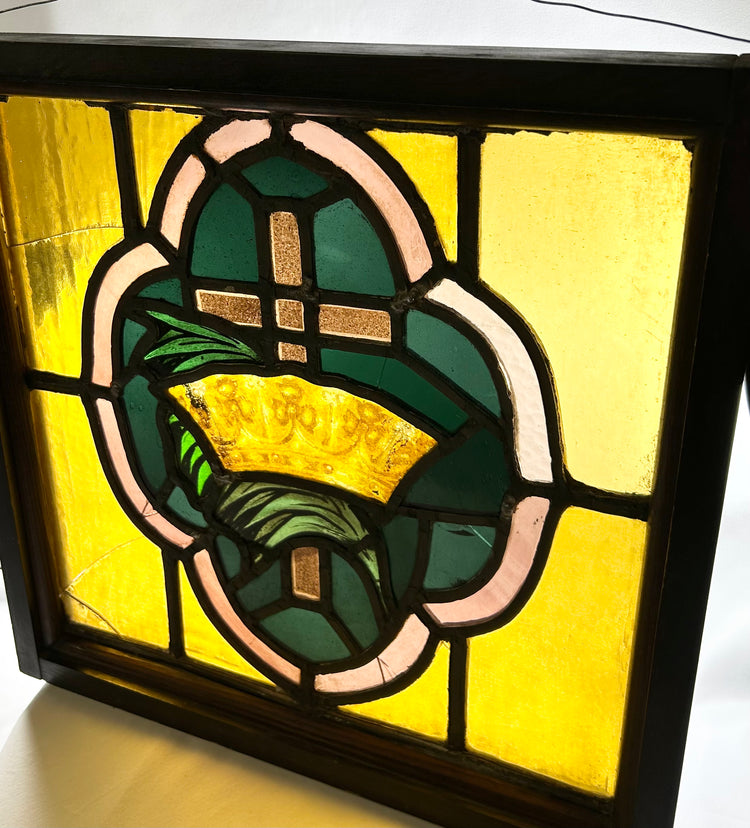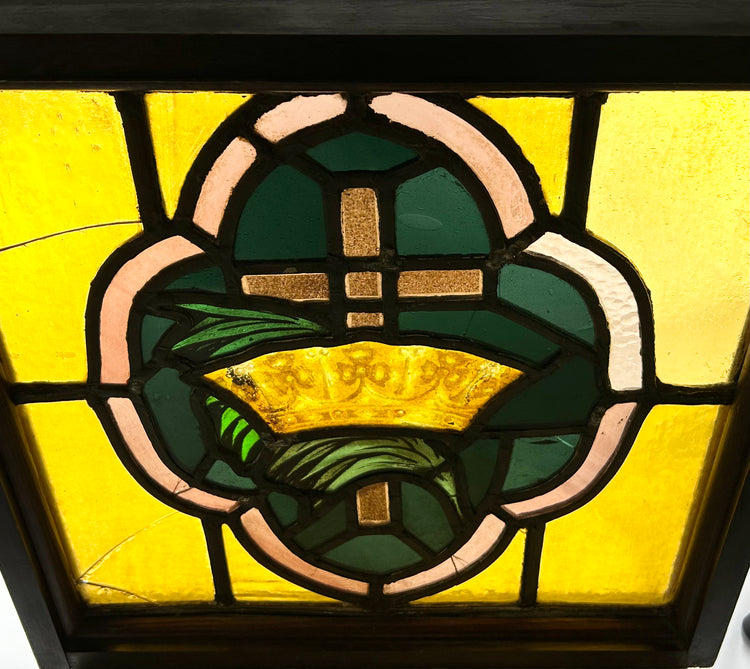Stained Glass Panel with Cross and Crown Motif | Ecclesiastical/Church Window | Circa 1900–1925
Descripción
Más
Menos
Historical Context & Origin
Region: Likely United States or Europe
Material: Colored stained glass set in a wooden frame
Period: Late 19th to early 20th Century
Description
This early 20th-century stained glass panel features a central cross and crown motif, surrounded by rich amber, green, and soft pink glass. The cross and crown is a Christian symbol representing the reward of eternal life for faithfulness and perseverance, commonly used in church decorations or religious institutions. The panel may have originally been part of a church window, chapel installation, or religious building, though it could also have been adapted for domestic devotional use.
Set in a simple wooden frame, the panel showcases geometric floral and stylized motifs consistent with early 20th-century Arts & Crafts or Art Nouveau design influences. The translucent glass catches natural light beautifully, illuminating the sacred motif and highlighting the craftsmanship of the period.
Features
- Central cross and crown motif symbolizing Christian faith and eternal reward
- Leaded stained glass in amber, green, and pink hues
- Likely originally intended as a church or devotional window panel
- Simple wooden frame highlighting the stained glass design
Cultural Significance
Stained glass panels with the cross and crown motif were popular in Christian ecclesiastical art during the late 19th and early 20th centuries. The cross represents Christ’s sacrifice, while the crown symbolizes victory, reward, and eternal life for the faithful. Such panels served both aesthetic and devotional purposes, enhancing the spiritual atmosphere of churches or chapels. Collectors value them for their artistry, craftsmanship, and religious significance, as well as their role in architectural and devotional traditions of the period.
Condition
The wooden frame shows age-consistent wear, including minor chips and scratches. Several cracks are present in the glass along lead joints, with one area missing a small fragment. Overall intact, with wear contributing to its historic character.
Dimensions (approximate)
Height: 16 in
Width: 16 in
Depth: 1.5 in
Age
Circa 1900–1925
Learn More
Explore the Symbolism of Church Stained Glass Colors : Symbolism Behind Stained Glass Color in Churches
Discover more stained glass pieces in our collection: 16th Century Stained Glass - Medieval - with Angel & Lightbox Display
Descripción
Historical Context & Origin
Region: Likely United States or Europe
Material: Colored stained glass set in a wooden frame
Period: Late 19th to early 20th Century
Description
This early 20th-century stained glass panel features a central cross and crown motif, surrounded by rich amber, green, and soft pink glass. The cross and crown is a Christian symbol representing the reward of eternal life for faithfulness and perseverance, commonly used in church decorations or religious institutions. The panel may have originally been part of a church window, chapel installation, or religious building, though it could also have been adapted for domestic devotional use.
Set in a simple wooden frame, the panel showcases geometric floral and stylized motifs consistent with early 20th-century Arts & Crafts or Art Nouveau design influences. The translucent glass catches natural light beautifully, illuminating the sacred motif and highlighting the craftsmanship of the period.
Features
- Central cross and crown motif symbolizing Christian faith and eternal reward
- Leaded stained glass in amber, green, and pink hues
- Likely originally intended as a church or devotional window panel
- Simple wooden frame highlighting the stained glass design
Cultural Significance
Stained glass panels with the cross and crown motif were popular in Christian ecclesiastical art during the late 19th and early 20th centuries. The cross represents Christ’s sacrifice, while the crown symbolizes victory, reward, and eternal life for the faithful. Such panels served both aesthetic and devotional purposes, enhancing the spiritual atmosphere of churches or chapels. Collectors value them for their artistry, craftsmanship, and religious significance, as well as their role in architectural and devotional traditions of the period.
Condition
The wooden frame shows age-consistent wear, including minor chips and scratches. Several cracks are present in the glass along lead joints, with one area missing a small fragment. Overall intact, with wear contributing to its historic character.
Dimensions (approximate)
Height: 16 in
Width: 16 in
Depth: 1.5 in
Age
Circa 1900–1925
Learn More
Explore the Symbolism of Church Stained Glass Colors : Symbolism Behind Stained Glass Color in Churches
Discover more stained glass pieces in our collection: 16th Century Stained Glass - Medieval - with Angel & Lightbox Display
También te puede interesar




















